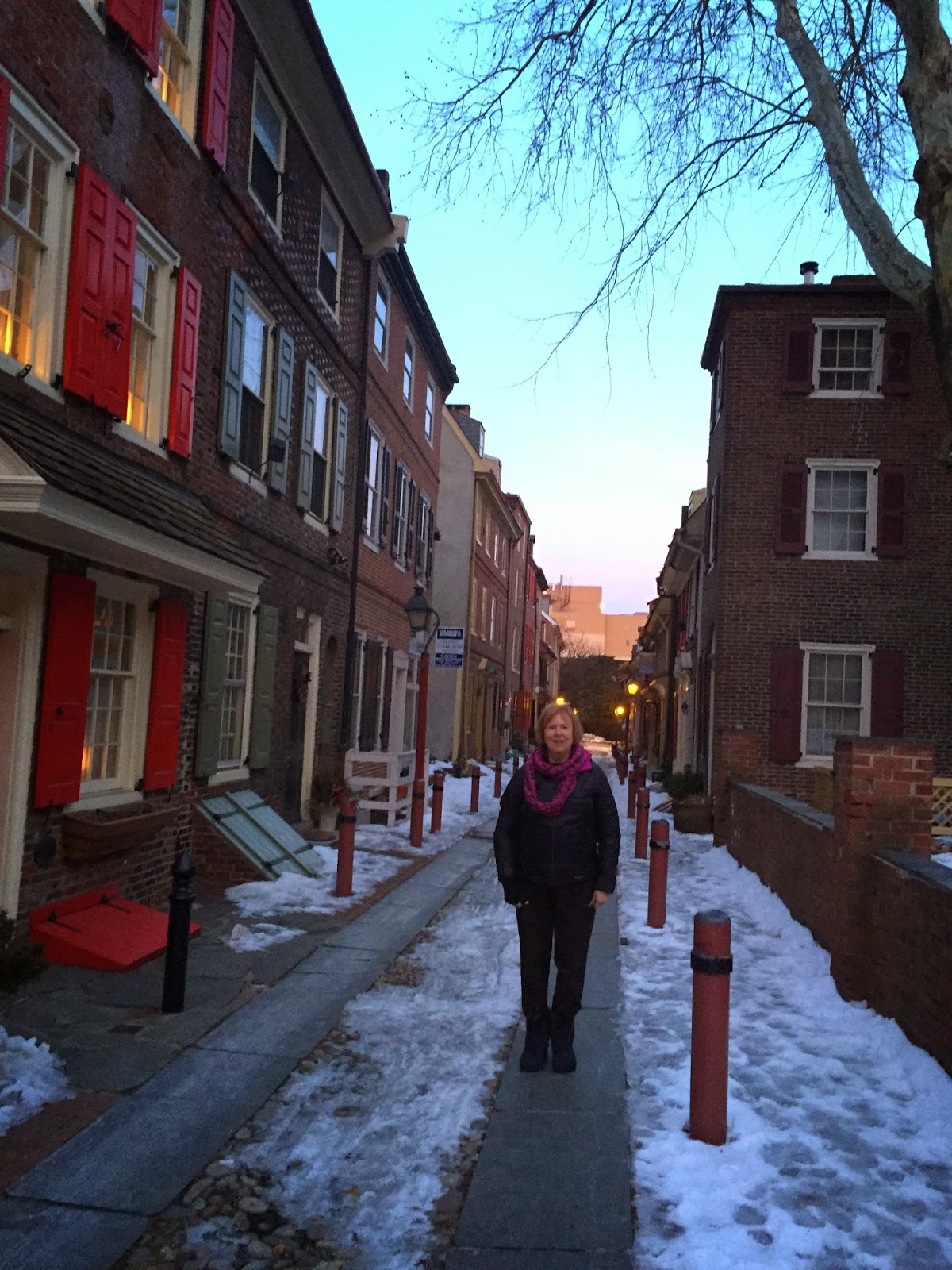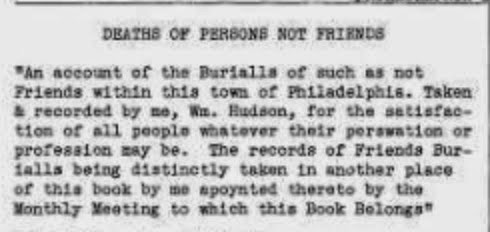William Penn had chosen the land where the Delaware and the Schuykill Rivers come close making the neck of land narrow for his new city. You can see the Center Square right in the middle of the map.
However, those who settled did their own thing. You can look at Elfreth's Alley to see that there is absolutely NO green space between the row houses that were built on that site. Jeremiah Elfreth died before 1700, so that Alley is VERY old. What really happened is that the settlers ended up settling along the Delaware River and ignored the center of the city and the land on the side of the city nearest the Schuykill River. So the Center square remained outside of the more heavily settled area in the early days.
Wikipedia says:
However, the Delaware riverfront would remain the de facto economic and social heart of the city for more than a century.
This information gives me the idea that James and Rose may have decided to move to the Delaware River front as they found that the center of the city did not develop as they had expected. James had spent his years while they lived at Center Square working on Penn's Mill and on the leaded glass windows at the Center Meeting house.
From Narratives of Early Pennsylvania, West Jersey and Delaware 1630-1707 Edited by Albert Cook Myers, Charles Scribners Sons NY 1912:
A footnote by Mr. Myers on page 271 says: "The Friends' Meeting House in the Centre Square of the city, midway between the Delaware and Schuylkill Rivers, where the City Hall now stands, was built of brick, in 1685-1686, and was used for a time for the more important First Day (Sunday) morning and business meetings of the society. The location being in the midst of the forest some little distance without the town, and its two or three streets along the Delaware, the meeting was not well attended; the Friends preferred to wait for the afternoon meeting at the Bank Meeting house, near at hand, within the town proper; consequently, in a few years the Centre Square meeting was abandoned."
My best guess is that James and Rose lived these truths and when the land just to the north of Vine Street (the northern boundary of Philadelphia) opened up, decided that they would move there in order that James' business would be more accessible to the population that was more heavily settled along the Delaware River. The area in which their land lay was in what is now the Northern Liberties:
The historical boundaries: Vine Street as the southern border and the Cohocksink Creek serving as the northern border. The creek now flows as a storm sewer under the following streets (starting at the Delaware River and running from southeast to northwest): Canal, Laurel, Bodine, Cambridge, and Orkney Streets.
The below is the map that Lynn sent to me that helped me locate the bank lot. Lynn says that the maps came from: The Philadelphia Map by Holmes was published in 1687. The northern Bank lot area came from the PA State Archive online.
James and Rose sold their Center Square lot in
James died in 1694.
Rose sold the Delaware River bank lot in 1709. Rose died in 1720. It is not likely that she moved outside of the city limits as her burial is recorded in the Philadelphia Meeting records. She is listed among the non-Quakers whose burial is recorded by.....
The one more piece of information that I want to add into this post deals with:
PHILADELPHIA EXEMPLIFICATION BOOK
7,
pp 581-582, in archives of the
Historical Society of Philadelphia, Philadelphia, Pennsylvania
JAMES
MOORE’S LOT ON THE WEST SIDE OF SECOND STREET IN PHILADELPHIA, PURCHASED 12
OCTOBER 1691 AND CONVEYED BY DEED FROM JOHN MOORE, HIS SON & HEIR, TO
NICHOLAS PEARCE ON 2 JANUARY 1694, for use of the Quakers to build a meeting
house (James Moore having prior to his death agreed to the sale to Pearce and
Pearce having paid him the seven pounds price for it, the same being
acknowledged in the following deed by John Moore, son of James, in order to
convey title from Moore to Pearce and the Society of Friends.) [this information sent to me by Joseph Moore}








































